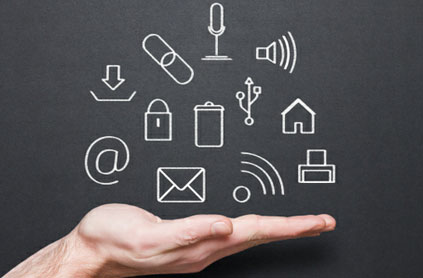Mobile technology
Introduction
Mobile computing allows people to use IT without being tied to a single location. Any business with staff that work away from the office can benefit from using it.
Whether you are travelling to meetings, out on sales calls, working from a client’s site or from home, mobile devices – can help you keep in touch and make the most productive use of your time. You can use a range of devices to stay in touch including laptops, netbooks, personal digital assistants and ‘third generation’ (3G) smart phones.
Mobile IT devices can also change the way you do business – new technologies lead to new ways of working, and new products and services that can be offered to your customers.
This guide explains how mobile computing can benefit your business and introduces the key technologies available.
What is mobile technology and what are the benefits?
Mobile technology is exactly what the name implies – technology that is portable. Examples of mobile IT devices include:
- laptop and netbook computers
- palmtop computers or personal digital assistants
- mobile phones and ‘smart phones’
- global positioning system (GPS) devices
- wireless debit/credit card payment terminals
Mobile devices can be enabled to use a variety of communications technologies such as:
- wireless fidelity (Wi-Fi) – a type of wireless local area network technology
- Bluetooth – connects mobile devices wirelessly
- ‘third generation’ (3G), global system for mobile communications (GSM) and general packet radio service (GPRS) data services – data networking services for mobile phones
- dial-up services – data networking services using modems and telephone lines
- virtual private networks – secure access to a private network
It is therefore possible to network the mobile device to a home office or the internet while travelling.
Benefits
Mobile computing can improve the service you offer your customers. For example, when meeting with customers you could access your customer relationship management system – over the internet – allowing you to update customer details whilst away from the office. Alternatively, you can enable customers to pay for services or goods without having to go to the till. For example, by using a wireless payment terminal diners can pay for their meal without leaving their table.
More powerful solutions can link you directly into the office network while working off site, for instance to access your database or accounting systems. For example, you could:
- set up a new customer’s account
- check prices and stock availability
- place an order online
This leads to great flexibility in working – for example, enabling home working, or working while travelling. Increasingly, networking ‘hot spots’ are being provided in public areas that allow connection back to the office network or the internet. The growth of cloud computing has also impacted positively on the use of mobile devices, supporting more flexible working practices by providing services over the internet.
Drawbacks
There are costs involved in setting up the equipment and training required to make use of mobile devices. Mobile IT devices can expose valuable data to unauthorised people if the proper precautions are not taken to ensure that the devices, and the data they can access, are kept safe.
Read more: nibusinessinfo.uk




